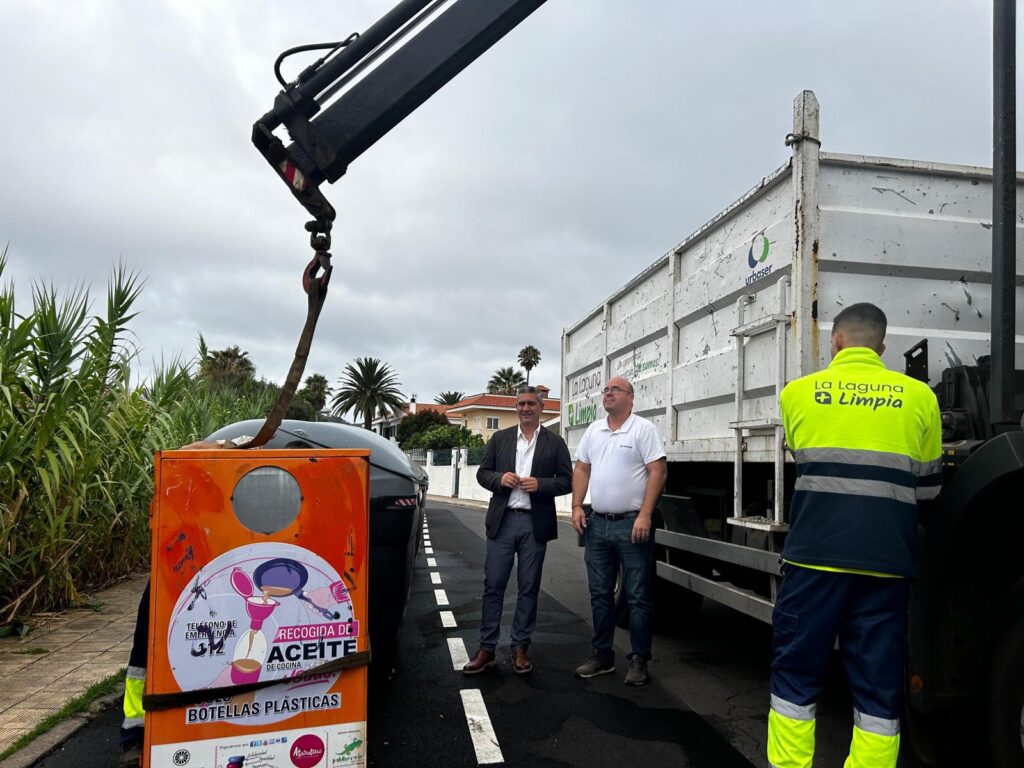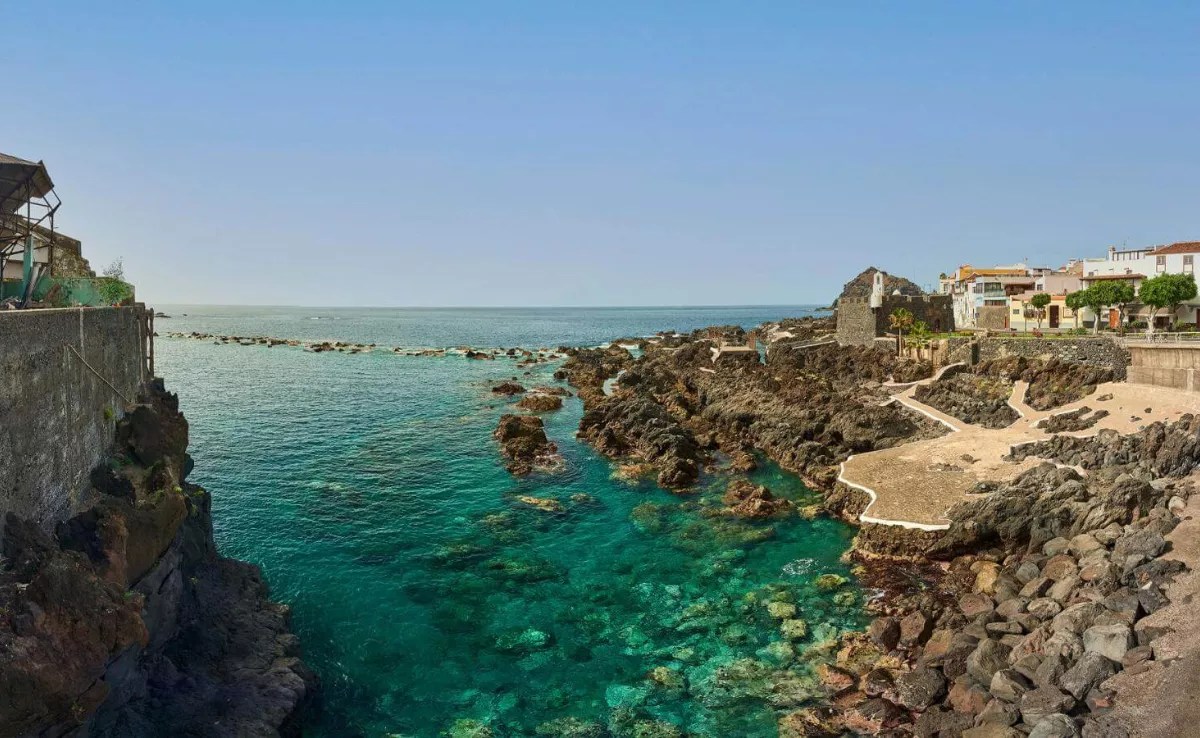
The events, which will take place every two months, will commence on 25th September
The Cabildo of Tenerife, through the Department of Presidency, Administration and Public Services, Territorial Planning and Historical Heritage, is organising a Training Conference Cycle on Interventions in Cultural Heritage in collaboration with the Official College of Architects of Tenerife. The event was presented today (Thursday) at a press conference attended by the Councillor of Presidency, José Miguel Ruano; the Insular Director of Historical Heritage, Isabel de Esteban; and the Dean of the Official College of Architects of Tenerife, La Gomera, and El Hierro, María Nieves Febles Benítez.
José Miguel Ruano emphasised the importance of these sessions, stating, “It is essential for professionals in architecture, law, and history to come together to ensure that the work carried out on cultural heritage is done correctly.”
Isabel de Esteban noted that “the conferences exemplify collaboration and shared commitment. They provide a meeting space that helps us progress towards a common goal: to ensure that Tenerife’s cultural legacy is preserved and vibrant for future generations.”
Meanwhile, María Nieves Febles Benítez remarked, “Protecting built heritage is an investment in conserving our identity as a distinguishing element. This cycle of conferences arises from a public-private partnership between the COA and Historical Heritage of the Cabildo of Tenerife to enhance the ongoing training of professionals tackling the challenge of working on the built heritage of the Canary Islands. These sessions coincide with the 40th anniversary of the Spanish Historical Heritage Law, a date that compels us to reflect on what has been done well and what can be improved.”
The conferences will be led by architects and legal experts specialised in heritage intervention, boasting proven experience in both academic and prestigious public institutions. During forthcoming sessions, current or particularly relevant case studies related to the Canary Islands’ built cultural heritage will be presented.
The sessions will occur bimonthly at the Official College of Architects of Tenerife, La Gomera, and El Hierro, with a prior registration system that allows for the subsequent issuance of a participation certificate jointly by the organising institutions.
The inaugural session will cover general criteria from esteemed experts who will reflect on the current technical framework regarding the conservation and protection of our built heritage. Among the stated objectives: aligning practice with regulations to establish a roadmap for future actions regarding the historical built heritage of Tenerife.
Programme
09:00 Introduction.
Rosa Dávila Mamely. President of the Cabildo of Tenerife
Ms María Nieves Febles Benítez. Dean of the COACTFE.
10:00 Ignacio González-Varas Ibáñez
Professor of Architectural Composition, Toledo
‘A NEW THEORETICAL AND OPERATIONAL FRAMEWORK FOR INTERVENTION IN HERITAGE: CONSERVATION, RESTORATION, REHABILITATION, AND ADAPTIVE REUSE’
In recent decades, the conservation and restoration of architectural heritage have shifted from being an exceptional or sporadic issue in architecture to a central focus in design practice and theoretical reflection. The inherent responsibility to preserve historical legacy and collective memory is increasingly complemented by environmental sustainability arguments that highlight the need to conserve, transform, and readapt what already exists.
This field of practice is no longer confined solely to monumental buildings of significant historical value; it now also encompasses structures of more modest character and form that prioritise the real needs of users and display a growing sense of responsibility towards the built and established environment. This presentation will discuss the challenges posed by this broader, more extensive, and diffuse framework that encapsulates the treatment of architectural heritage today.
10:45 / Susana Mora Muñoyerro
Senior Lecturer in Architectural Constructions, Polytechnic University of Madrid.
‘THE RELATIONSHIP BETWEEN THEORY AND PRACTICE’
The presentation will offer a brief overview of the main theories and positions advocated in Spain, from the initial declarations for the protection of Architectural Heritage (1844) to the present day. It will address their realities, successes, and the numerous challenges to their implementation.
This concise exposition will draw upon recently executed works, with particular mention of those for which I have had responsibility.
12:00 / Marco Antonio Garcés Desmaison
Architect, former head of the Monument Section at the Directorate General for Heritage of the Junta de Castilla y León. President of the Partal Academy.
‘RESTORATION CRITERIA IN THE ARCHITECTURAL HERITAGE OF CASTILLA Y LEÓN’
The institutional context and the duality of restoration-promoting administrations within the Autonomous Community. Specific aspects of architectural heritage in a wide and sparsely populated territorial framework: magnitude, variety, dispersion, construction vulnerability and quality.
The gradual establishment of stable methods by the Administration for planning restoration, from prior scientific knowledge and value identification to applying specific criteria for each case: continuity, respect for historical reading, minimal intervention, and maximum compatibility. Concrete examples of attention to various situations within a large-scale context. A brief comment on the current state.
16:00 / Callogero Bellanca
‘REFLECTIONS ON THE 60TH ANNIVERSARY OF THE VENICE CHARTER’
Sixty years ago, in connection with the II International Congress of Architects and Technicians of Historic Monuments held in Venice from 25th to 31st May 1964, the ‘International Charter on the Conservation and Restoration of Monuments and Sites’ was drafted, adopted the following year by ICOMOS in 1965, and has since been regarded as a fundamental reference document.
This presentation will conduct a detailed analysis of the sixteen articles comprising this important Declaration, discussing its relevance and some of the issues related to its direct application.
16:45 / Antoni González Moreno-Navarro
‘PUTTING ARMS ON THE VENUS DE MILO’
Monumental restoration is a specific discipline within the broader field of cultural heritage restoration. Its specificity lies in the very nature of the object, the monument, which adds the essential architectural value to its documentative and significant values. This includes the ongoing relevance of its use and role in defining the physical environment of collective life, as well as the relationship of the individual to the space created by that materiality. Such specificity necessitates the definition of objectives, methodologies, and intervention criteria that cannot be addressed through generalist theories.















